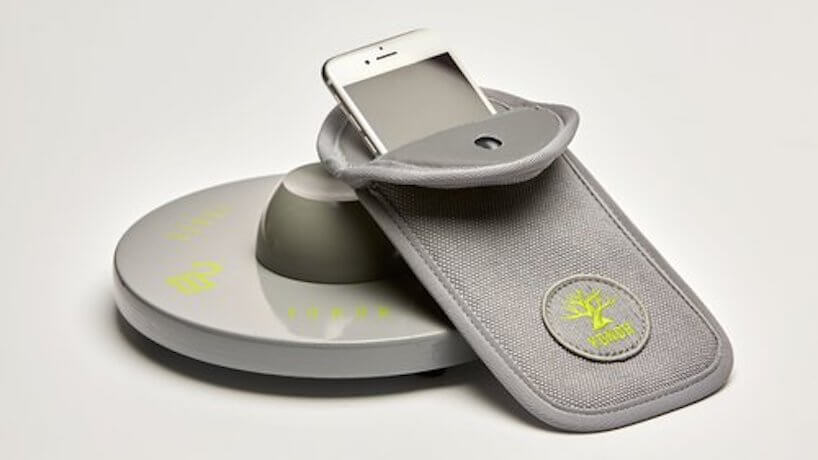When Grammy-winning musician Jack White unveiled plans for a tour behind his new album, the announcement came with a rule that surprised today’s tech-addicted, smartphone-recording concertgoers: No phones will be allowed at the shows. “We think you’ll enjoy looking up from your gadgets for a little while and experience music and our shared love of it in person,” the statement read.
White isn’t alone in his efforts to dim the glow of smartphone screens in the audience. Comedians Dave Chappelle and Chris Rock have made the same moves at their stand-up performances. Shifting people’s attention to the stage doesn’t rely on making them check their mobile devices at the door, though. Instead, Chappelle and Rock both worked with a startup called Yondr, which specializes in creating phone-free spaces.
The company makes patented cases for smartphones, which are handed to their owners as they enter the room. The cases automatically lock once the phone is inside the case. After they leave, they tap the case on an unlocking base to reconnect with the overly connected digital world.

If bands and comedians can create smartphone-free environments, can business events and educational conferences accomplish the same feat? According to Graham Dugoni, founder of Yondr, it’s already happening.
Dugoni told PCMA that Yondr has been used at Complex Con, an event hosted by the Colorado Association of School Executives, and an event hosted by WeWork. “Sometimes, the entire event is phone-free,” Dugoni said. “Sometimes, only a portion of programming is phone-free — for example, a specific panel or product demo.”
Whether organizers are hoping to keep attention focused on the conversation or aiming to accommodate a speaker who doesn’t want a presentation shared online, the system strikes a good balance of control between the hosting organization and the attendees: Phones disappear, but they’re still in the pockets of the owners. For smartphone-obsessed attendees, they’ll still have the comfort of knowing where their devices are located. They just won’t be able to use them.
Logistical Questions
As organizers draft standard “What to Know Before You Go” emails, a disclaimer about the digital-free environment is essential. “It’s important to message the phone-free policy in advance of the event,” Dugoni said. “Some people have never experienced a phone-free event before, so providing messaging in advance is super informative.”
Communication can make arriving and locking phones easy, but what about the unlocking process? When thinking about a throng of 4,000 attendees exiting a ballroom, are there any hiccups in helping them get back to their phones? No, according to Dugoni. “Using Yondr at an event does not add any material time to ingress or egress,” he said. “We work closely with event planners and venue managers to ensure the correct amount of Yondr unlocking stations are positioned at every exit. Rooms actually clear out faster at phone-free events because people aren’t texting or staring at their phones as they exit the venue.”
Considering the increase in the number of texting-while-walking accidents, it seems like Yondr should add safety to its list of selling points. Interested in learning more about the service? Check out the company’s FAQ page.

